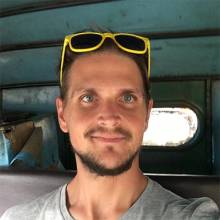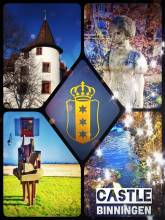South West Africa
Introduction: in expectation of many highlights
Before heading down to the southern most tip of Africa , I first continued westwards. From Zimbabwe
, I first continued westwards. From Zimbabwe , I transitioned into Botswana
, I transitioned into Botswana and then moving on to Namibia
and then moving on to Namibia . Those two nations were equally unknown to me as the three central countries I have just crossed. However, their reputation promised endless nature, wildlife and great safaris. Thus, I was planning to spend more time here than the prior areas. I was hoping to do some extraordinary Game Drives to spot the big five again.
. Those two nations were equally unknown to me as the three central countries I have just crossed. However, their reputation promised endless nature, wildlife and great safaris. Thus, I was planning to spend more time here than the prior areas. I was hoping to do some extraordinary Game Drives to spot the big five again.
Botswana: endless sand, heat and some problems
From the very first moment, Botswana felt a bit confusing to me. With its natural resources and tourism, it is clearly more wealthy and developed as its eastern neighbours. At the same time, it is mostly defined by desert and has one of the world’s lowest population density. Despite the good roads, I ran into multiple problems. First, the last gas station before the Kalahari Desert was closed, so I could not drive through any of the pans (flat land). Then, I was stopped by the police for speeding. While I was confirming the non-existence of a proper speed sign and talking my way out, several other drivers paid their fine. It was quite fun, turning yet another annoyance into a victory.
Okawanga: some water, but more sand and problems
Struck by a heavy drought, water is scarce in Botswana. My next Game Drive in the Okawanga Delta / Moremi, I had to abort completely. After being stuck in soft sand, I was pulled out by a stronger vehicle. My car’s 4-wheel-drive failed and could not be repaired. Forced to move on, I made my way through the dusty heat into the North. At a last stop, a fairly old Bushman showed me his ancestors rock paintings and historic sites. He was helping me to differentiate the older San people (Bushmen) from the younger and darker Bantu tribes. It is amazing to cross a continent to see and feel the great human migrations. Botswana did not bring much luck, but was an extraordinary experience.
Namibia: back to western life and mass tourism
After Botswana, Namibia surprised me even more. This young nation just gained independence 25 years ago. Today, it presents itself as a modern and safe country. The main roads are all freshly tarred with endless tourists in rented cars. Cities might still be small and rural, but have shiny malls and shops. Walking through these towns felt fairly surreal, like an artificial oasis in middle of a rough and arid landscape. One century ago, Namibia was a German colony for two decades. This brief period has an amazing impact on today’s life. Early immigrants kept their tradition and even language. Besides English and Africans, many people still speak German. Many townships preserve the history in a small museum. Their collection seamlessly presents the world’s progress of the last century.
Breakdown: getting pulled out of a National Park
The start in the Etosha National Park could not have been better. Because of the drought, all the wild animals gather around artificial waterholes. Except the shy Leopard or Cheetah, I saw all the animals within half a day. But then the car gave up and did not start anymore. For the first time, it had to be pulled to a mechanic. After one week, the best mechanic in town gave up and sent me to a specialist in the capital. In Windhoek, the car could be repaired again, but I lost valuable days. I have missed many highlights along the Atlantic skeleton coast. Instead, I enjoyed the city life with wild parties and long city walks. From the Bavarian Oktoberfest, I directly stumbled to a creepy Halloween party. It was certainly a weekend to remember!
Namib Desert: flat tires, dunes and the Atlantic Ocean
I could not wait to finally move on again. The two weeks without a car helped me to catch up with my blog, but also felt like torture. The next drawback followed immediately: on the rough gravel, I got two flat tires. Luckily, I encountered very helpful people, helping me to change and even repair one of the tires. Two hours later I had them replaced and was off gain. With a lot of respect, I crossed the arid Namib Desert. This landscape is as stunning as dangerous. Driving through vast plains, along rough mountain ranges and soft dunes, not seeing another car for hours. The abandoned township Kolmanskop impressively shows the force of nature. Desert is claiming back its land and eating up the buildings. In only two days, I made my way through the desert and reached the Atlantic Ocean in Luderitz.
Summary: facing the history and struggle of mankind
This part of my journey was shadowed by car problems. For the first time on my sabbatical travel, I was struggling with more challenges than solutions. I have seen mechanical parts and electronics suffer and break under harsh conditions. I struggled, but I never gave up. Whatever problem I was facing, I found helpful and supporting people. It is amazing how we human withstand and together deal with unhospitable environments. From ancient bushmen, over millennia of migrations and colonisation onto modern nations. We struggle, we fight, we survive and we evolve!
I am enormously grateful to all the good people who helped me with the car. Without them, I would not have been safe or could not have reached any of my destinations.




